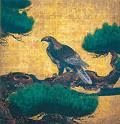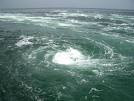- Collecting Legends in the comments -
::::::::::::::::::::::::::::::::::::::::::::::::::::::::::::::::::::::::::::::::::::::::::::::::::::
Hawk (taka)
***** Location: Japan, other areas
***** Season: Various, see below
***** Category: Animal
*****************************
Explanation
Kigo for Winter
Hawk (taka 鷹 たか)
hawk in the cold, kandaka 寒鷹(かんだか)
wild hawk arataka 荒鷹(あらたか)
young hawk, wakataka 若鷹(わかたか)
"Bear Hawk" kumataka 熊鷹(くまたか)
common buzzard のすり
peregrine, falcon, hayabusa 隼(はやぶさ)
small falcon, kohayabusa 小隼(こはやぶさ)
marsh harrier, chuuhi ちゅうひ
Eurasian kestrel 長元坊(ちょうげんぼう)
magusodaka 馬糞鷹(まぐそだか), magusotsukami 馬糞つかみ(まぐそつかみ)
鷂(はいたか)、European sparrow hawk hashitaka はしたか
sparrow hawk, tsumi 雀鷂(つみ)
sashiba 刺羽(さしば)
hawk flying over, migrating hawk, taka wataru 鷹渡る
konori 兄鷂(このり), essai 悦哉(えっさい)
big hawk, ootaka 大鷹(おおたか)
small hawk, kotaka 小鷹
morogaeri 蒼鷹(もろがえり)
takagari 鷹狩 (たかがり) hunting with hawks and falcons and related kigo
xxxxxxxxxxxxxxxxxxxxxxxxxxxxx

© PHOTO yoshimi-photo.a-thera.jp/
:::::::::::::::::::::::::::::::::::::::::::::::::::::::::::::::::::::::::::::::::::::::::::::::::::
Kigo for Autumn
Hawks where used for hunting during the Edo period.
hawk leaving his sleeping place, haka no toya de
鷹の塒出 (たかのとやで)
..... toyade no taka 塒出の鷹(とやでのたか)
..... hashitaka 箸鷹(はしたか)
..... toya masari 鳥屋勝(とやまさり, taka toya 片鳥屋(かたとや), morotoya 両鳥屋(もろとや)
wild, bad-tempered hawk, arataka 荒鷹 (あらたか)
hawk covered by a net, amigake no taka 網掛の鷹(あみがけのたか)
hawks leaving the mountains, taka no yamawakare
鷹の山別 (たかのやまわかれ)
..... yama wakare 山別(やまわかれ)
..... wakaredori 別れ鳥(わかれどり)
"going back to the mountain", yama gaeri 山帰り(やまがえり)
hawks migrating, taka wataru 鷹渡る (たかわたる)


*****************************
Worldwide use
*****************************
Things found on the way
“Duck Hawk”
the bird was originally known as the Peregrine Falcon since very early times (even in Latin and in Old French) and the use of “Duck Hawk” in early 19th-century America is due to an error by the Scots-American ornithologist Alexander Wilson and perpetuated in his book American Ornithology.
Wilson, while recognizing the identity of the American bird with the species that had “long been known in Europe” (i.e. the Peregrine Falcon), nonetheless made a serious error: He refused the term “peregrine” because, he wrote, “The epithet “peregrine” is certainly not applicable to our hawk, which is not migratory, as far as our most diligent inquiries can ascertain….”
Of course today we know Wilson was quite wrong about that. It is in fact a migratory bird, which is why the name has been CORRECTED AND RESTORED TO ITS OLD FORM of “Peregrine Falcon”.
source : David Coomler, THF Viral 6.5
:::::::::::::::::::::::::::::::::::::::::::::::::::::::::::::::::::::::::::::::::::::::::::::::::::::
. Otakapoppo お鷹ぽっぽ toy hawk
from Yonezawa, Yamagata. Sano Ittobori carving
*****************************
HAIKU
鷹一つ見付てうれしいらご崎
taka hitotsu mitsukete ureshi Iragosaki
By a singular stroke
Of luck, I saw
A solitary hawk circling
Above the promontory of Irago.
Matsuo Basho
Tr. Nobuyuki Yuasa
Iragozaki 伊良湖崎

© PHOTO 牛久市森田武
There is also a stone memorial of this haiku at Iragozaki on this LINK.
.............................................................................
Discussing the translation of the above haiku
From an essay by Kazuyoshi Enozawa, Keio University, Japan, titled "A Japanese Perspective on English Poet, Gerard Manley Hopkins."
Enozawa says of this translation:
"The genius of the translator saw that it would not do to put the one line of the original verse into the customary three lines. So he cleverly expanded the key idea in the original into four English lines. Why did the translator need four lines of English to translate a single-line Japanese verse? ...
"The original Haiku line contains just one verb and one adjective, which together constitute the middle word-group. The verb is mitsukete, and the adjective is ureshi. As is usual with Japanese, there is no explicit word denoting the subject of the verb and the adjective. The implied subject is the pronoun 'I', as the Japanese reader judges immediately. Hence the 'I' in the English version.
There is a cause-effect relation between the verb and the adjective, so that the meaning of the middle word-group in the original would be something like 'I was delighted to find . . .'.
"Any reader but the dullest would instantly sense the flatness of such a paraphrase. ... What comes to me as a striking expression in Professor Yuasa's translation is the idiomatic 'By a singular stroke / Of luck, I saw . . .'. The object of the poet's observation is of course a hawk, that is, Taka hitotsu. This phrase literally means 'just one hawk', or 'a single hawk'.
"Again this paraphrase would look poor: it suggests in effect that there was no more than just one bird in flight. The translator obviously wanted to evoke some such emotion as 'loneliness' in the reader by deliberately choosing the emotive adjective 'solitary' instead of a mere numerical 'one' or 'single'. What then did the poet see a hawk doing? The original verse says nothing. It is left entirely to the reader's imagination to decide the supposed action of the bird. Here the translator has chosen a verb very appropriate to the scene: 'circle' in its (present) participial form 'circling'.
Irago-zaki is simply a place name referring to 'the promontory of Irago'. Here again, one has a need to supply some appropriate preposition for the noun phrase irago-zaki. And the appropriate preposition within the context that comes most naturally alike to the translator and to the reader is 'over' or 'above' and there is no question about it."
http://www.gerardmanleyhopkins.org/studies/japanese.html
Basho's "taka hitotsu" appears in "Oi no Kobumi" ("Knapsack Notebook," title translated by David Barnhill).
Barnhill says about this haiku:
"Cape Irago, at the tip of a peninsula, was famous in waka for its hawks. It also was associated with the exiled Prince Oomi in the early 'Man'yoshu' poetry collection..."
When Basho wrote this haiku, he was also visiting a disciple, Tokoku, who was living there. Barnhill describes Tokoku as having "moved to Irago after suffering financial difficulties."
But others describe Tokoku as being in exile there (Shirane), and having his hideout there (Sanga). Some commentators suggest that seeing a hawk is a veiled reference to Basho seeing Tokoku there.
Compiled by Larry Bole
Here are other translations of Basho's haiku:
finding a hawk
fills me with pleasure
here at Cape Irago
tr. Ueda
one hawk
the joy of finding it
at Irago Point
tr. Shirane
a lone hawk:
finding it brings such joy
at Cape Irago
tr. Barnhill
Cape Irago -
I am so happy to observe
a solitary hawk
Tr. Gabi Greve
::::::::::::::::::::::::::::::::::::::::::::::
いらご崎 にる物もなし 鷹の聲
Iragozaki niru mono mo nashi taka no koe
Irako Point -
nothing even resembles
the voice of the hawk.
(Tr. Donald Keene)
iragozaki, iragosaki, irakosaki. いらござき にるものもなし たかのこえ
....................
This appears in Basho's haibun, "The Village of Hobi" (title tr. by David Barnhill), which is near Cape Irago. Barnhill translates the haiku:
Cape Irago:
nothing can match
the hawk's cry
Although Barnhill gives the literal meaning of 'niru' as 'resemble', which is the meaning that Keene uses in his translation, Barnhill uses "match" in his translation.
I don't think Keene's use of "resembles" is good. He means it in the senes of "comes close to being like," but it can also mean "is like." One COULD interpret him to mean that there were no hawks there at all; that there was no hawk's cry to be heard. Whether it's correct or not, Barnhill's version makes more sense to me.
Comment by Larry Bole
Basho visited Iragozaki 伊良湖崎, 伊良古崎 in November 1687, with three of his students.
The area is also famous for an old kiln, where the roof tiles for the temple Todai-Ji in Nara have been made.
It is situated on Atsumi Peninsula 渥美半島.
Irago Misaki 伊良湖岬(いらごみさき)
.............................................................................
夢よりも現の鷹ぞ頼もしき
yume yori mo utsutsu no taka zo tanomoshiki
. Matsuo Basho 松尾芭蕉 - for Tsuboi Tokoku 坪井杜国 .
:::::::::::::::::::::::::::::::::::::::::::::::::::::::::::::::::::::::::::::::::::::::::::::::::::
bright autumn sky -
the shadow of a hawk
on my hands
Gabi Greve, Sep 26, 2006
my mountain life -
the hawk sails slowly
in the morning mist
This year we have Mr. and Mrs. Hawk, sitting on the tree stumps near the mailbox, waiting for me to come up.
Then they take off and sail up and down the valley in all their splendor.
Sometimes we whistle to each other and they fly very low over my head!
December 2011
::::::::::::::::::::::::::::::::::::::::::::::::::::::::::::::::::::::::::::::::::::::::::::::::::::
office lunch -
a hawk comes to the window
with a fish
Zhanna P. Rader
(Canadian Zen Haiku canadien, vol. 2, #4, 2004)
::::::::::::::::::::::::::::::::::::::::::::::::::::::::::::::::::::::::::::::::::::::::::::::::::::
flying hawk -
children running after
its shadow
Siboko Yamame
Kenya, January 2011
:::::::::::::::::::::::::::::::::::::::::::::::::::::::::::::::::::::::::::::::::::::::::::::::::::
the hawk takes off -
a shower of blossoms
pink but not sakura
Johannes Manjrekar
Joys of Japan, January 2012
*****************************
Related Images

Kozan Toei

CLICK for more of his drawings !
Nakayama Sûgakudô 中山嵩岳堂 Nakayama Sugakudo (act. 1850–1860)
Forty-eight Hawks Drawn from Life
生写四十八鷹図 (Shô utsushi yonjûhachi taka).
::::::::::::::::::::::::::::::::::::::::::::::::::::::::::::::::::::::::::::::::::::::::::::::::::::
***** Birds of Autumn
***** Birds of Winter
***** The BIRD SAIJIKI
[ . BACK to WORLDKIGO TOP . ]
- #taka #hawk -
::::::::::::::::::::::::::::::::::::::::::::::::::::::::::::::::::::::::::::::::::::::::::::::::::::
































